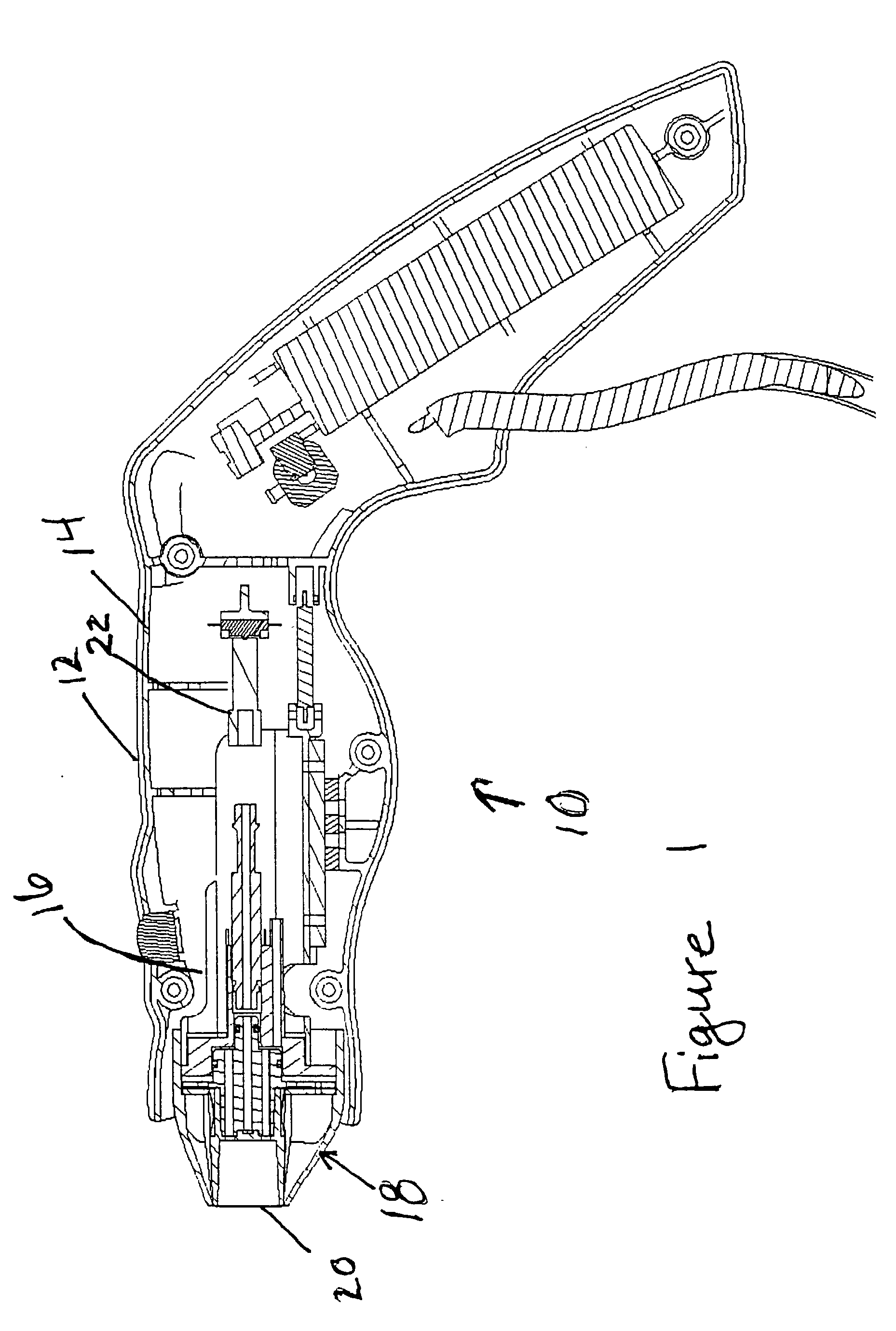Method for treatment of tissue
a tissue and treatment technology, applied in the field of tissue treatment, can solve the problems of limiting the effectiveness of treatment and/or precluding treatment altogether, skin problems, and non-uniform thermal effect of electrode surface,
- Summary
- Abstract
- Description
- Claims
- Application Information
AI Technical Summary
Benefits of technology
Problems solved by technology
Method used
Image
Examples
example i
[0095] Water-Soakable Release-Paper
[0096] SKINCAL (r)
[0097] Water-Insoluble Protective Coating
[0098] Solids 12 wt %
[0099] Polyvinylbutyral
[0100] Solvent (Volatiles) 88 wt %
[0101] Methanol
[0102] Ink jet Imaging Coating
[0103] Solids
[0104] Poly(2-Ethyl-2-Oxazoline) 14.94 wt %
[0105] Polymethyl Methacrylate Spheres 0.04 wt %
[0106] (particle size 10 microns)
[0107] Cellulose Acetate Propionate 1.60 wt %
[0108] Polyvinyl Pyrrolidone 1.25 wt %
[0109] Citric Acid 0.09 wt %
[0111] Methyl Ethyl Ketone 39.36 wt %
[0112] Propylene Glycol Mono Ethyl Ether 26.24 wt %
[0113] Ethanol 16.43 wt %
[0114] The gum-coated side of the SKINCAL(r) paper is treated with the above-described water-insoluble protective coating. The coating is applied using a No. 28 Mayer rod and dried for 3 minutes at 120 degree(s) F. Next, the above-described ink jet imaging coating is applied to the dried water-insoluble protective layer using a No. 40 Mayer rod and dried for 3 minutes at 120 degree(s) F. In...
example 2
[0115] Water Soakable Release Paper
[0116] SKINCAL (r)
[0117] Ink jet Imaging Coating layer
[0118] Solids
[0119] 1. Copolymer of vinylpyrrolidone and dimethyl 50 wt. %
[0120] Ammonium methacrylate (ISP Technologies)
[0121] 2. Copolymer of methyl methacrylate and 10 wt. %
[0122] hydroxyethyl methacrylate (Allied Colloids)
[0123] 3. Methylated melamine-formaldehyde resin 10 wt. %
[0124] (Cytec Industries)
[0126] Methyl Ethyl Ketone 20 wt. %
[0127] The gum-coated side of the SKINCAL(r) paper is treated with the above-described highly cross-linked ink jet imaging coating. The coating is applied using a No. 40 Mayer rod and dried for 3 minutes at 120 degree(s) F. In this manner, an ink jet recording medium, suitable for forming the pattern is prepared.
[0128] The removable skin marking embodiments of the present invention can be used with a variety of different energy sources, including but not limited to RF, microwave, ultrasound, resistive heating, coherent and incoherent...
PUM
 Login to View More
Login to View More Abstract
Description
Claims
Application Information
 Login to View More
Login to View More - R&D
- Intellectual Property
- Life Sciences
- Materials
- Tech Scout
- Unparalleled Data Quality
- Higher Quality Content
- 60% Fewer Hallucinations
Browse by: Latest US Patents, China's latest patents, Technical Efficacy Thesaurus, Application Domain, Technology Topic, Popular Technical Reports.
© 2025 PatSnap. All rights reserved.Legal|Privacy policy|Modern Slavery Act Transparency Statement|Sitemap|About US| Contact US: help@patsnap.com



